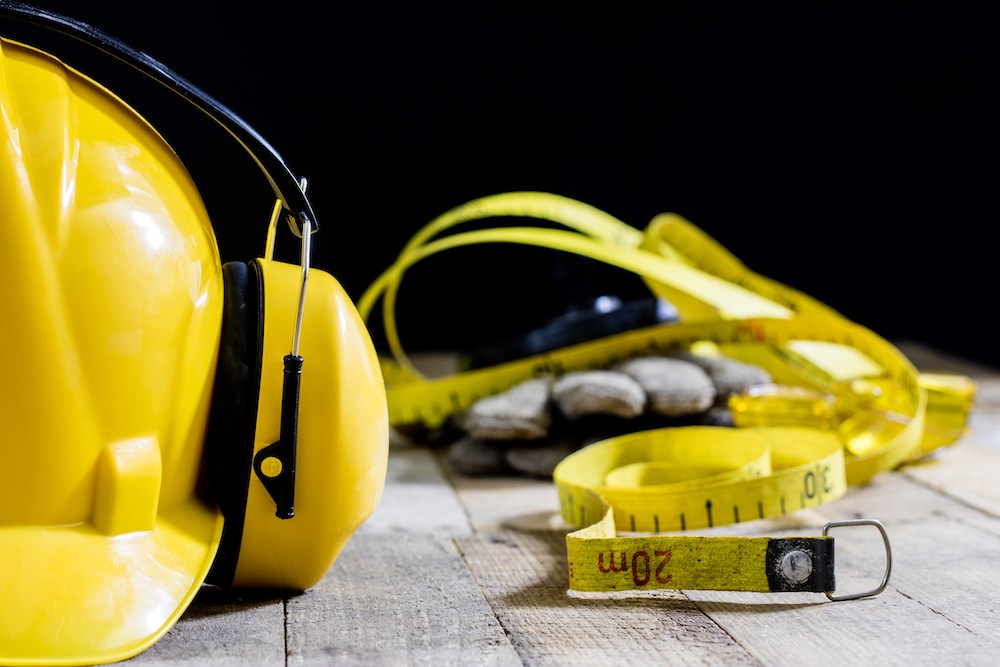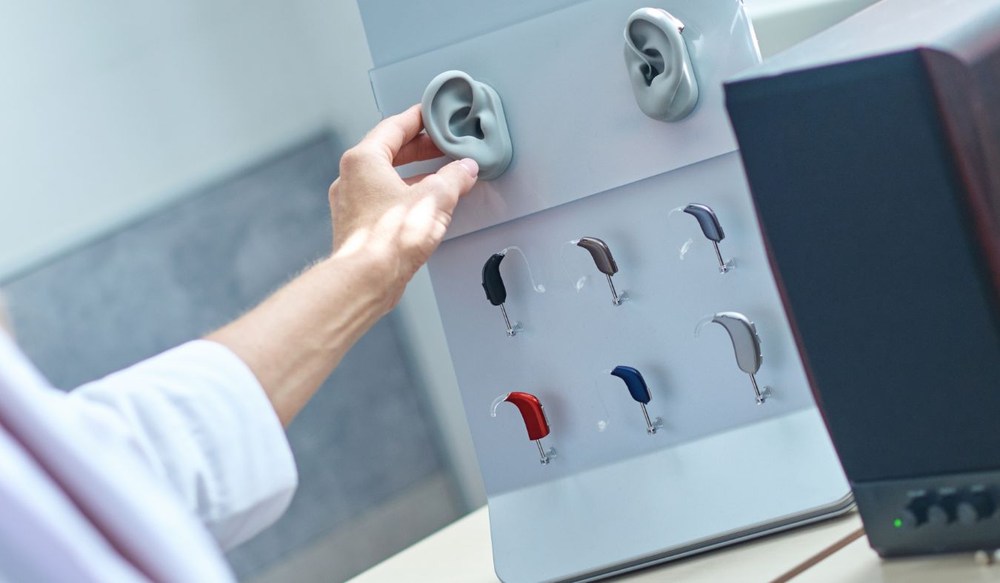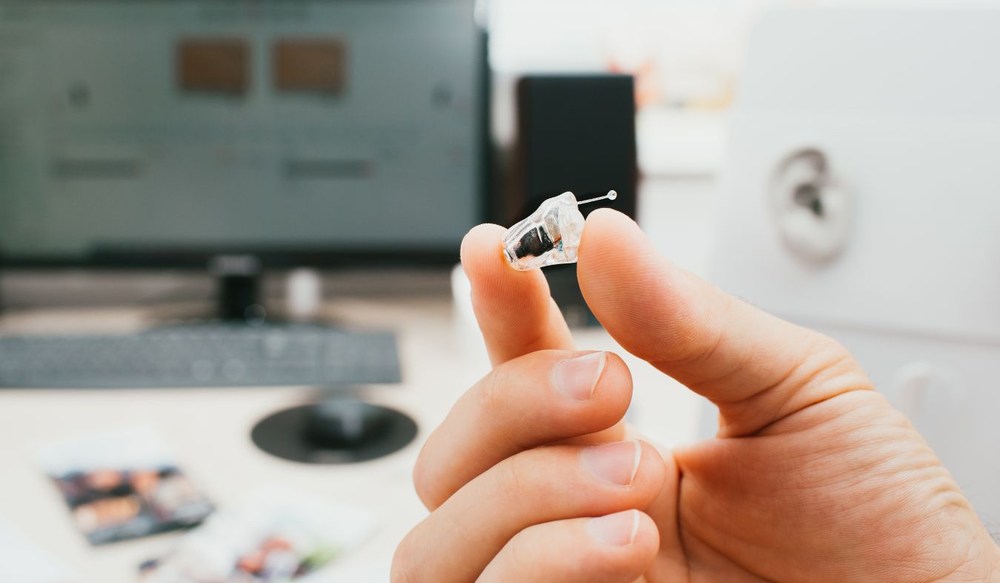How to Protect Your Hearing During Fall Festivals
Fall festivals bring live music, crowded spaces and loudspeakers that can
An interview with Lyn Kirsch, Au.D.: In honor of Black History Month, CAA celebrates diversity of the audiology community in California.
Read More →

By: admin | October 20, 2025
Fall festivals bring live music, crowded spaces and loudspeakers that can push noise levels higher than you might expect. Between bands performing on outdoor stages, announcements over speaker systems and the general buzz of large crowds, your ears are working overtime to process all that sound. While a few hours at a festival might not seem like a big deal, the noise exposure can be intense enough to cause temporary or even permanent damage to your hearing. Understanding how loud these environments actually get helps you make smart choices about protecting your ears without missing out on the experience.
Taking steps to protect your hearing at fall festivals doesn’t mean you can’t have fun or fully participate in the event. It means recognizing that your ears have limits and that loud sounds can cause harm you won’t necessarily feel in the moment. Noise induced hearing loss is cumulative, so each festival you attend without protection adds to your total exposure over time. The good news is that simple precautions can keep your hearing safe while still letting you enjoy the music, food and atmosphere that make these events worth attending.
Hearing begins when sound waves enter the ear and travel through the outer ear into the ear canal, reaching the eardrum. The eardrum vibrates in response to these sound waves, and those vibrations are transferred through the tiny bones in the middle ear. These bones amplify the sound and pass it on to the cochlea, a fluid-filled structure in the inner ear that contains thousands of tiny hair cells. These hair cells convert the vibrations into electrical signals that are sent through the auditory nerve to the brain, where they are interpreted as sound.
Noise-induced hearing loss happens when these delicate hair cells are exposed to sounds that are too loud or last for extended periods. High-intensity noise causes the hair cells to bend excessively, stress or even break, which reduces their ability to convert vibrations into electrical signals accurately. Unlike some cells in the body, hair cells do not regenerate, so damage from loud sounds accumulates over time. Even short bursts of extremely loud noise can temporarily impair the function of these cells, and repeated exposure can lead to permanent changes in hearing.
The inner ear is particularly vulnerable because the cochlea is packed with hair cells tuned to detect different frequencies. Loud noises can affect certain regions of the cochlea more than others, altering how we perceive specific pitches. Over time, repeated exposure to damaging sounds gradually reduces the overall sensitivity of these hair cells, changing the way sound is processed by the auditory nerve and interpreted by the brain. This process explains why continuous or sudden exposure to loud environments can result in long-term hearing changes without any immediate awareness.
Festival layouts can affect how much noise reaches your ears. Large open areas, stage placement and the location of speakers all play a part in your overall sound exposure.
Look for wide spaces or natural barriers like trees or buildings, which can help block or soften loud sounds. Walking paths that keep you away from clusters of speakers or busy stages are often quieter. Food courts and vendor sections also tend to be less noisy than main event spaces. Taking a moment to notice the layout before settling in helps reduce your risk of prolonged exposure to loud noise.
Fall festivals are full of sounds that can reach very high volumes. Live music from stages and speaker systems often exceeds 90-100 decibels (dBs), levels that are much louder than normal conversation. Fireworks and sudden announcements can peak at 120 dBs or more, creating short bursts of extreme intensity. Carnival rides with engines and alarms add background noise in the 85-95 dBs range, while large crowds cheering, clapping or talking loudly can reach 80-90 dBs over sustained periods.
These noises vary throughout the day, producing an environment where the ears are exposed to both continuous and sudden high-volume sounds. Music stages create sustained loud zones, fireworks and announcements create sharp spikes and engine noises from rides contribute ongoing intensity. Even the chatter of a large crowd adds to the overall noise load, making the auditory environment of a festival complex and consistently elevated.
Attending a fall festival means experiencing a wide range of decibel levels in a short span of time. The combination of sustained music, sudden high peaks from fireworks or announcements, and ambient crowd noise creates an environment where exposure to high-volume sound is frequent and unpredictable.
Noise-induced hearing loss often develops gradually, making it easy to overlook at first. Repeated exposure to loud sounds can cause changes in how your ears perceive certain frequencies, especially higher-pitched noises. Paying attention to specific signs can help you understand when noise has affected your hearing.
Common signs of noise-induced hearing loss include:
Where you choose to stand or sit at a festival makes a real difference for your hearing. Positioning yourself away from speakers and loud equipment reduces your exposure to high noise levels. This small decision helps protect your ears both during and after the event.
A few helpful tips for picking a safe spot include:
At festivals, noise levels can change quickly and sometimes become overwhelming without you realizing it. You can usually tell when sound is too loud for your ears by noticing how it affects your ability to interact with others and perceive your surroundings.
Some common indicators include:
You should use hearing protection at fall festivals whenever you expect to be near loud music, fireworks or large crowds. Earplugs or earmuffs are especially helpful if you plan to spend time close to speakers, stages or noisy rides. Even brief periods of loud sound can increase the risk of hearing loss over time.
Hearing protection is also a good idea for children and anyone with sensitive ears. Some people prefer special earplugs that reduce sound levels but still allow music and voices to be heard clearly. Bringing your own ear protection helps you stay ready for sudden changes in noise levels that often occur during festival events.
Several types of hearing protection are available for festival use. Foam earplugs are easy to find and fit most people, while reusable silicone earplugs offer more comfort for longer wear. Special music earplugs lower the volume but still allow you to enjoy clear music and conversations.
Knowing about these options gives you more control over your hearing health during noisy events. Using hearing protection helps prevent lasting changes in how you hear, so you can continue enjoying festivals each year without worry about noise-related hearing loss.
Using earplugs correctly is important for effective protection. Start with clean hands, roll the earplug into a small shape and gently insert it into your ear until it feels snug but comfortable.
Check that both earplugs fit well and block out enough sound without causing pain or pressure. Proper use lowers your risk of hearing loss from loud music or sudden noises, helping you enjoy events while keeping your hearing safe.
Taking breaks from noisy areas at festivals gives your ears time to recover. Constant loud sound can make your ears less able to handle noise as the day goes on.
Finding a quiet spot can be tough when the festival is busy, but planning short visits to quieter places like food courts, rest areas or grassy sections away from speakers can help. These breaks lower the total amount of noise your ears experience and make it easier to enjoy music and conversations without lasting changes in how you hear.
After a festival, you might notice ringing in your ears or that sounds seem muffled. These changes can happen even if the event did not seem extremely loud at the time. Giving your ears some quiet time can help them recover, and paying attention to these changes is important for understanding how noise affects your hearing.
If you have concerns about your hearing after a loud event, contact an audiologist to discuss your symptoms. These specialists can check your hearing, answer questions about any changes you’ve noticed and explain what the results mean for your daily life. Getting support early helps you stay aware of your hearing and better enjoy future events without unexpected changes.
Being aware of the noise levels at fall festivals helps you understand how your ears are affected and why paying attention matters. Loud music, cheering crowds and announcements all combine to create a high-volume environment that challenges your hearing, even if it feels normal in the moment. Recognizing the intensity of these sounds gives you a clearer picture of when your ears are working hard and when it’s time to give them a break.
If you notice any changes in how you hear after attending a festival or have questions about your hearing, getting support from an audiologist can provide clarity and guidance. Contact our team at Kirsch Audiology in Santa Monica, CA at (310) 586-5533 to discuss your hearing, have it checked or learn more about what you can do to stay aware of your exposure while still enjoying the events you love.
Tags: hearing loss prevention tips, hearing protection products

Fall festivals bring live music, crowded spaces and loudspeakers that can
By: admin | October 20, 2025

Getting hearing aids fitted properly can be tricky because your
By: admin | July 29, 2025

When the weather warms up and you’re ready to get back outside, your
By: admin | June 20, 2025
